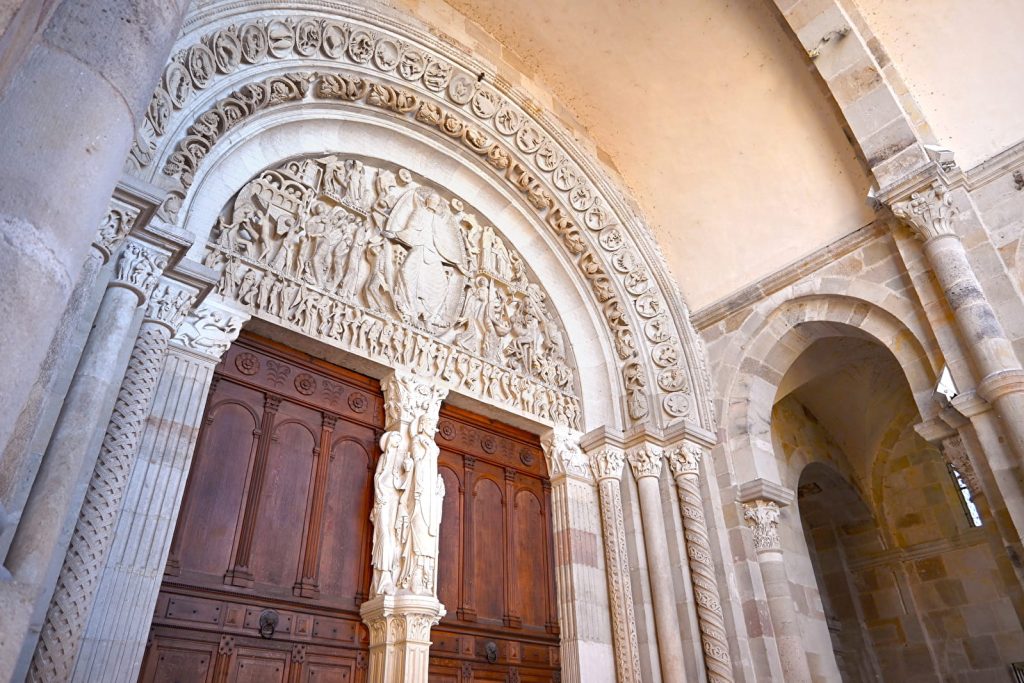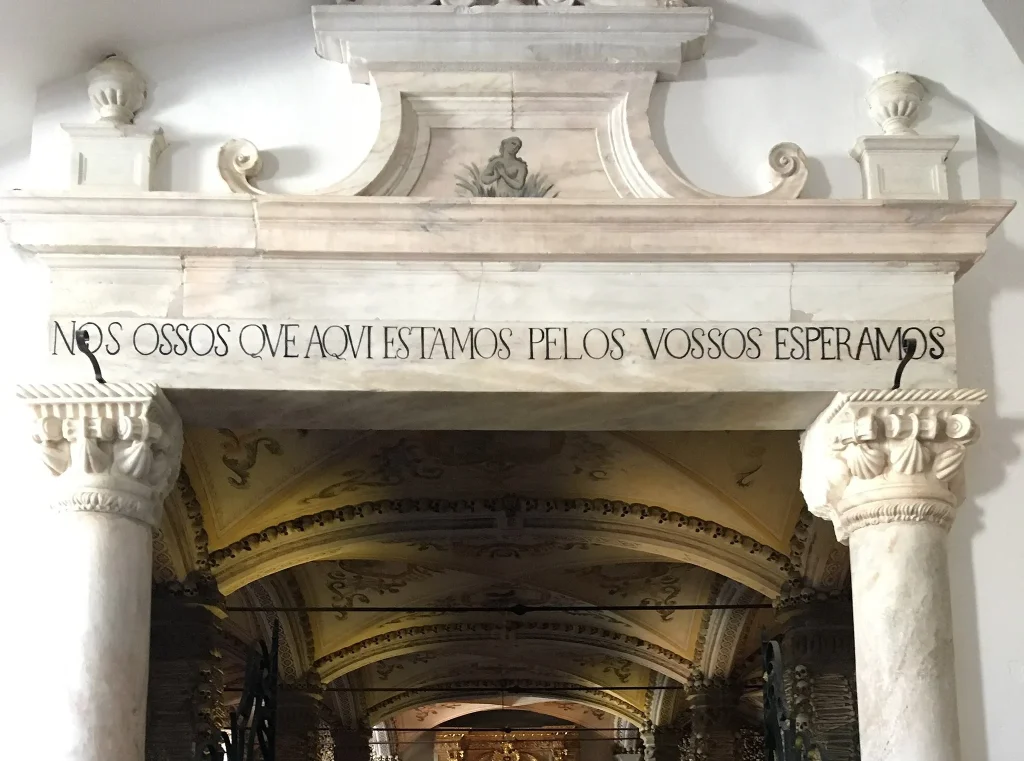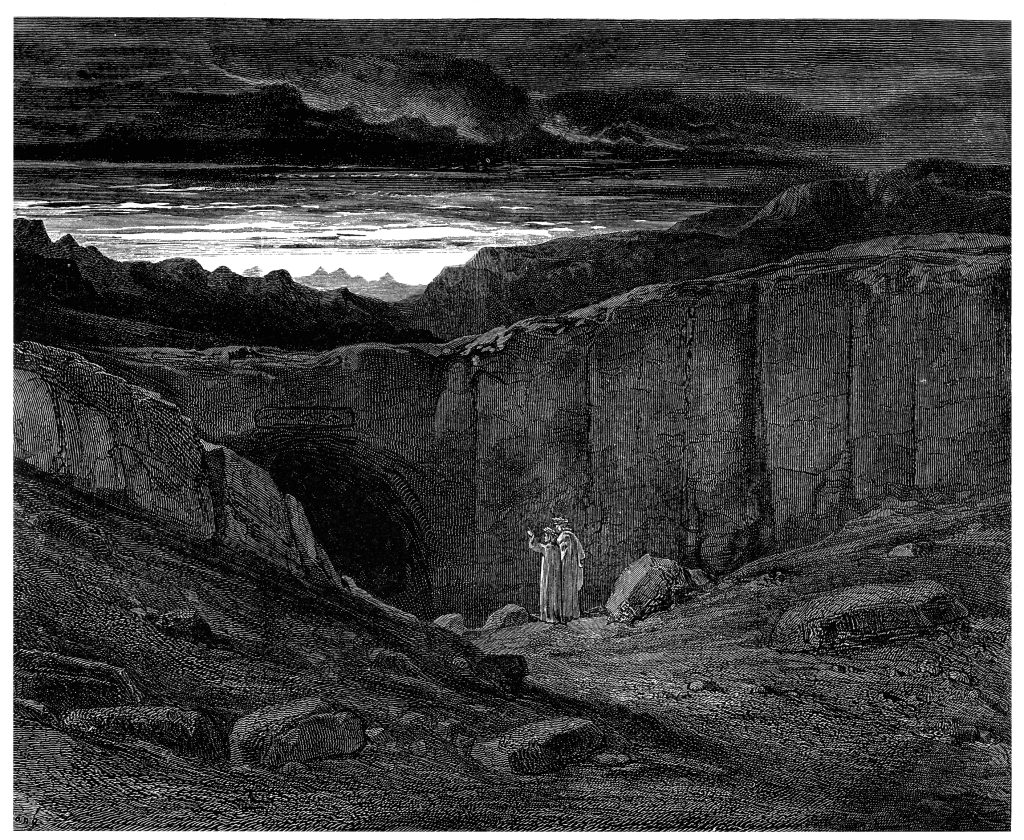
I love old buildings. Looking at the architecture of old post offices makes me wonder why builders of the past would care to build lasting, beautiful buildings dedicated to “mundane” tasks such as handling mail. Wouldn’t that be reserved for old, medieval, gothic cathedrals or government buildings? Those were days in which architects cared about sending messages through what they built – imparting timeless wisdom through brick and mortar (or marble, if you will). But if you look around now at modern architecture, they will often leave no impression on you, and communicate no wisdom to you. Quite the opposite, it is boring to look at, empty, even sad. As godlessness spreads throughout places that were once ablaze with the gospel, many ancient church buildings are either vacant and vandalized, or have been turned into dance clubs and cultural hotspots, or are now places that teach false and weak doctrine, a mere shell of what they once were built and used for. As a form of art, architecture necessarily reflects the worldview of its time. For a long time, church architecture did the same: It intentionally sought to point those without and those within to their mortality, to God’s immortality, and to their place beyond the grave. There was objective truth to communicate, and lies to repudiate. Meanwhile, modern architecture claims to put forward no meaning but what is in the eye of the beholder. No truth to communicate or lies to repudiate (unless you question that very premise – then objective truth seems to matter once again). And with no God above but ourselves, we turn inward, and become sick. And that sickness is reflected in the works of man, including art. Let us look at the architecture of the past, particularly portals in cathedrals. Here is where we can learn from the past. Jason M. Baxter, in his book A Beginner’s Guide to Dante’s Divine Comedy, writes the following,
“In the Middle Ages, it was common to place an inscription on a gate to a city, to inform travelers who built the arch and for what reason. It was even more common to place an inscription above the grand doors—or portal—of medieval cathedrals, written as if the gate were speaking to the traveler. The inscription would issue some sort of admonition about how to best enter through that portal. One such inscription is above the portal of the Church of St. Lazarus, in Autun, France: 'In this way, whoever does not lead a disobedient life will rise again, and endless daylight will shine for him. Gislebertus made me. May this terror terrify those whom earthly error binds, for in truth the horror of these sights announces what awaits them.'”1

Another one is located in Évora, Portugal named Capela dos Ossos (Chapel of Bones) — The inscription reads:
"We bones that are here await yours."2
The Chapel gets its name because the interior walls are covered and decorated with human skulls and bones. It was built in the 17th century at the initiative of three Franciscan monks, so that locals could reflect on the transience of life and to get a clear allegory of death.
More than five thousand bones and skulls adorn its walls, ceiling and columns of this chapel, all sourced from the city’s cemeteries. There are even two complete skeletons hanging, one of them being a child.

Completed eleven years after his death, the tomb of Pope Alexander VII is another one worth mentioning. Located in St. Peter’s Basilica in the Vatican, the imposing tomb includes one important character,
"[B]elow Alexander, the figure of Death is represented in gilded bronze, shrouded in a billowing drapery of Sicilian jasper. He raises an hourglass to symbolize that time has passed. The hourglass is also an artistic symbol of 'memento mori' which translates from Latin to 'remember you will die.'"3
Even old churches had the community graveyard right in front of the building, called churchyards, and you had to walk by your buried family members and friends before you could enter the portal into the church building. That is not something practiced any longer, not entirely because of an encroaching Enlightenment worldview that seeks to avoid talk of mortality and death and elevate the human intellect to immortality, but also because of overcrowding and the increase of infectious diseases at the time. Nevertheless, the churchyard reminded you of your mortality and the mortality of those who came before you. Not out of morbidity, but to point you beyond yourself – you don’t exist for yourself and by yourself, you are part of a community. You have a beginning and an end, you are not superior to anyone else. In the words of the 19th century English preacher, Charles Spurgeon,
"Six feet of earth make all men equal. Death is the great leveler. The worm has no respect for knighthood or nobility. The mighty monarch and the slave, find common bed within the grave."4
Reader, you might think at this point, “Yes, but, is that all? Everything said so far is just to remind us of our death?” Praise be to the Lord that the answer is a resounding “NO!” The architecture we’re speaking of is not like the modern day observance of Halloween where horror is used for the sake of horror, and death for the sake of death (for more on this author’s take on how to celebrate Halloween properly, see this article). Let’s turn now and talk about the threefold use of the law: pedagogical, civil, and moral/normative. The second question of the Heidelberg Catechism summarizes it as follows,
2. How many things are necessary for you to know, that in this comfort you may live and die happily? Three things: the first, how great my sin and misery is; the second, how I am redeemed from all my sins and misery; the third, how I am to be thankful to God for such redemption.5
“How great my sin and misery is.”
Dr. Scott Clark helpfully summarizes the pedagogical use of the law as follows,
"[I]n this use, the law is taskmaster, a pedagogue (Gal 3:24), a harsh teacher with a ruler or a switch that beats us sinners when we transgress. This is the expression of God’s holy, relentless righteousness (justice), that must be satisfied either by ourselves or by another. God’s law threatens death for all those who transgress: “The day you eat thereof, you shall surely die.” (Gen 2:17)."6
The second use speaks to the application of the law of God to society at large, and the third use speaks to how the law of God rules the life of the believer day to day. For purposes of this article, we will focus on the first use. For more on the threefold use of the law, Dr. R. Scott Clark has written helpful articles that you can find here and here.
Sin often blinds human beings from their state of “sin and misery.” We fail to grasp that without Christ, we are,
"dead in our trespasses and sins" (Eph. 2:1).
The law, then, serves the function of a mirror that shows us who we really are, not who we think we are. Like Oscar Wilde’s 19th century The Picture of Dorian Grey, we know that we all have a painting of ourselves that we loathe to look at. We believe that destroying it would
"kill the past, and when that was dead, [we] would be free. It would kill this monstrous soul-life, and without its hideous warnings, [we] would be at peace."7
We want to continue living in our fanciful world of feigned beauty and immortality. To the person who has not repented of their sins and has not considered the holiness and perfection of God and their unholiness and imperfection, the law of God is abhorrent, because it shows us who we truly are:
"[A] dead man, in evening dress, with a knife in his heart....withered, wrinkled, and loathsome of visage."8
Man grows sated and bored, often intentionally ignorant of his own fate and state, to such a degree that he must first be jolted and shocked with that which he seeks to avoid. That is what the first use of the law does: set before us the sight that Isaiah saw in Isaiah 6:5, which then shows us who we are without Christ: dead in sins and trespasses. The law of God points the unbeliever to the bones of those who came before, enabling us to hear them say “We bones that are here await yours,” not simply to drive us to despair, but to then point us to Christ. After all, Christ says in Matthew 22:31-32,
"But regarding the resurrection of the dead, have you not read what was spoken to you by God: ‘I am the God of Abraham, and the God of Isaac, and the God of Jacob’? He is not the God of the dead but of the living.”
Unless the Spirit of God revives the bones by bringing them to life like He did vividly and graphically in Ezekiel’s vision in Ezekiel 37 and blows new life in them through the new birth spoken of in John 3:8, the law will remain abhorrent to the unbeliever because it shows them that which they do not want to come to terms with, not because the law is abhorrent – it is actually good and perfect (1 Timothy 1:8) – but because they have not yet been brought out of death to life (Eph. 2:4-6). The law is that portal of warning preparing the sinner to what lies within: death to the proud, and life to the humble; death to the dead, and life to the living. Entering a building where God was worshipped was considered an act of leaving the world behind, and stepping into the realm beyond – the very throne room of God where God will ultimately separate His people from the rebels, the sheep from the goats (Matthew 25), where the only thing separating one group from the other is a five-letter word: Grace.
The intentional nature of church art and architecture pointed the sinner to take a hard look at himself, despair of himself, and realize that salvation had to come from outside of himself. Psalm 49:7 says,
"No man can by any means redeem his brother or give to God a ransom for him."
If no man, including myself, can save me, how, then, can I be made right with God? Enter the gospel,
"For I delivered to you as of first importance what I also received, that Christ died for our sins according to the Scriptures, and that He was buried, and that He was raised on the third day according to the Scriptures."

If you stop at “Christ died,” then we truly have no hope (1 Cor. 15:12-19). Then the famous words engraved in the portal to Dante’s hell would be true for all people, not just those who will ultimately be damned,
“Through me you pass into the city of woe: Through me you pass into eternal pain: Through me among the people lost for aye. Justice the founder of my fabric moved: To rear me was the task of power divine, Supremest wisdom, and primeval love. Before me things create were none, save things Eternal, and eternal I shall endure. All hope abandon, ye who enter here.”9
But Christ did not remain dead. He,
"was raised on the third day according to the Scriptures."
Dear reader, hear the bones calling for you to join their number one day, and stop looking to yourself or any other man, and look to Christ who was and is truly God and truly man – who by his perfect life and death victoriously defeated sin and death –, repent of your sins, and
"Believe in the Lord Jesus, and you will be saved, you and your household" (Acts 16:31).
The great 16th century reformer, Martin Luther, struggled with the way to salvation as he read Romans 1:16-17,
"For I am not ashamed of the gospel, for it is the power of God for salvation to everyone who believes, to the Jew first and also to the Greek. For in it the righteousness of God is revealed from faith to faith; as it is written, 'But the righteous man shall live by faith.'”
Dr. Luther believed that Paul meant that man must be saved by his own righteousness. He did not understand that Paul was pointing at the righteousness of another – that of Christ’s. But he did eventually come to understand the true gospel. He finally could see not just the bones of the dead before him, but he had been ushered into
"Mount Zion and to the city of the living God, the heavenly Jerusalem, and to myriads of angels, to the general assembly and church of the firstborn who are enrolled in heaven, and to God, the Judge of all, and to the spirits of the righteous made perfect, and to Jesus, the mediator of a new covenant, and to the sprinkled blood, which speaks better than the blood of Abel" (Heb. 12:22-24).
When you understand the justice of God in punishing sin because He is perfect and holy, and when you understand that you must answer to Him one day after your death, and when you further understand that nothing you do can make you right with him, but only Christ alone, and when you run to Him only, then the portal of warnings and threats will become to you a portal to life. Then you will hear,
"Enter into the joy of your master" (Matthew 25:21).
And you will sing with Luther and all the saints,
"I felt that I had been born anew and that the gates of heaven had been opened. The whole of Scripture gained a new meaning. And from that point on the phrase, 'the justice of God' no longer filled me with hatred, but rather became unspeakable sweet by virtue of a great love."10
Next time you see an old cathedral or architectural design, slow down and pay attention. If you enter in, make sure you heed the warning and enter appropriately. Many of them literally have a message of life and death. Listen. Old walls have much to say to us yet.
NOTES
- Baxter, Jason M. A Beginner’s Guide to Dante’s Divine Comedy.
- https://en.wikipedia.org/wiki/Tomb_of_Pope_Alexander_VII#:~:text=The%20Tomb%20of%20Pope%20Alexander,by%20Pope%20Alexander%20VII%20himself.
- https://en.wikipedia.org/wiki/Capela_dos_Ossos#:~:text=The%20Capela%20dos%20Ossos%20was,in%20a%20variety%20of%20patterns.
- Spurgeon, Charles H. The Salt Cellars
- https://www.crcna.org/welcome/beliefs/confessions/heidelberg-catechism
- https://heidelblog.net/2013/07/law-and-gospel-and-the-third-use-of-the-law/
- Wilde, Oscar. The Picture of Dorian Grey
- Ibid.
- Alighieri, Dante. The Divine Comedy
- Gonzalez, Justo. The Story of Christianity, Vol. 2